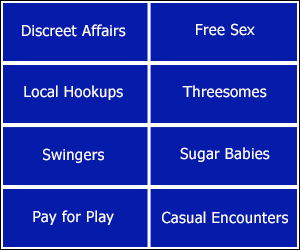Former Prostitute Publishes Internet Escort's Handbook for Aspiring Call Girls
When most schoolgirls were playing with their Barbie dolls, Amanda Brooks was dreaming of growing up to be a prostitute. "When I was in fourth grade, it sounded like a good idea for me. To me it sounded like a really interesting way to make a living and not having to follow other peoples' rules," she said by telephone from Texas where she lives.
Retired at 29 with a steady boyfriend after two-and-a-half years working as an escort, she has published the Internet Escort's Handbook series for aspiring call girls everywhere. The series so far contains two books. The first book, called "The Foundation" covers "basic mental, emotional and physical considerations in escort work". The second, "Advertizing and Marketing," gives tips on how to set up a Web site and advertize online.
"When I began working I had a lot of questions and there wasn't really any way to find out answers. I did what they always tell authors to do: I wrote the books that I wished I had been able to read," she said. Brooks is unapologetic about a lifestyle that she says suited her perfectly. On her Web site she describes her frustration at being told she should get a "real job." "I've read many job books which list the symptoms to look for when a job is going bad: depression, stress, anxiety, insomnia, weight gain or weightloss, anger, ulcers, hair loss, hatred, suicidal thoughts, and feeling trapped."
"How did I feel working as an escort? Happy, satisfied, in control of my life; wealthy, healthy, at peace with myself, free, successful and I slept like a baby every night." Brought up in a small town in Texas, she graduated from college with a double degree in photography and English before getting a job as a cocktail waitress at a strip club. She then worked as a stripper for four years before finally taking the plunge at 26 and placing an ad offering escort services. At a time when global trafficking and organized crime are making prostitution more dangerous than ever, Brooks said the internet made it easier to go into business on your own -- free from exploitation by agencies, brothel owners or pimps.
The main tip for staying safe is: do your homework. She used the Internet to screen her clients and turned down appointments when she had doubts. The worst abuse she suffered was clients who refused to pay her fees, which she said were "standard prices in the U.S., between $250 and $500 an hour."
The work became safer once she had a steady stable of regular clients. She found them easier to deal with than her boyfriend. "Adding money to a sexual relationship does not necessarily make it violent or horrible," she said. "Relationships with my clients are fun and easy. They were kind of a break from real life and we all know that real life can be difficult."


I don't like her standard prices ...
We need an economic (and social) situation in which the "average working man" can afford to have sex with a hooker twice or three times a month as part of reasonable discretionary spending. Anyone care to confabulate the mathematics? Any aspiring social economists out there?